Reflecting on how to improve our open communities
 Paloma OliveiraNavigating uncharted waters often leads to intriguing discoveries. Imagine immersing yourself in a realm that commemorates a quarter-century of Open Source accomplishment. Invited by Open Source Initiative (OSI) to reflect upon the 25 years of Open Source at COSCUP, a conference in Taiwan that focuses on coders, users and promoters of Open Source, I threw myself into these waters by proposing a review of history that is not unique around the globe, taking my perspective from South America and Europe to Asia, where I had never before ventured.
Paloma OliveiraNavigating uncharted waters often leads to intriguing discoveries. Imagine immersing yourself in a realm that commemorates a quarter-century of Open Source accomplishment. Invited by Open Source Initiative (OSI) to reflect upon the 25 years of Open Source at COSCUP, a conference in Taiwan that focuses on coders, users and promoters of Open Source, I threw myself into these waters by proposing a review of history that is not unique around the globe, taking my perspective from South America and Europe to Asia, where I had never before ventured.
You can read a full transcript of my talk here and check my critical take on the topic. After all, to review is to be able to identify where we failed and to be able to proceed from there.
More than offering something, I return with baggage full of new perspectives that made me renew my vision about the importance of Open Source in global and local contexts. COSCUP is a distinguished conference, drawing together Open Source enthusiasts mostly from around Asia: Japan, Malaysia, Indonesia, Singapore, Hong Kong and many others were heavily present. In this piece, we’ll embark on a thoughtful exploration of COSCUP’s defining characteristics, offering a nuanced perspective that distinguishes it in the bustling landscape of technology events.
So, what makes COSCUP a great conference?
From and to the communities
Spread across two days, the conference adopts a unique structure, with sessions categorized under different tracks, each managed by dedicated communities. This approach empowers participants to navigate subjects aligned with their interests, fostering connections with kindred spirits. The emphasis on community-led curation breathes fresh air into the conventional conference model. You can find the topics/ communities here https://coscup.org/2023/en/topics.
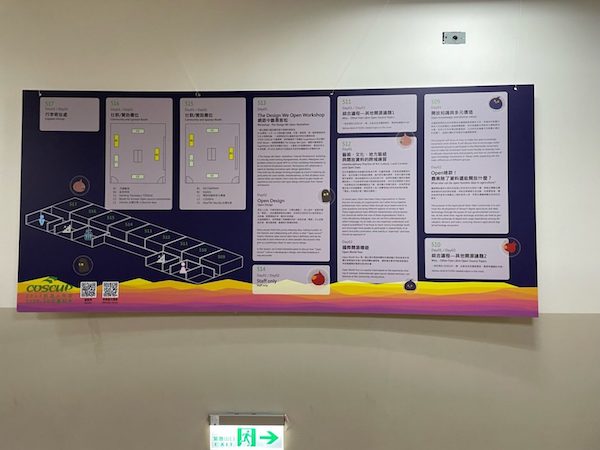 Hallway signage informing of rooms and content curated by communities. Credit - Paloma Oliveira
Hallway signage informing of rooms and content curated by communities. Credit - Paloma Oliveira
A melting pot of global and local voices
Navigating through COSCUP’s conference offerings went beyond language preferences in English or Chinese. In reality, it was a journey through a tapestry of diverse voices, akin to a symphony of polyphonies. This allowed for an intriguing blend of both global and local perspectives.
While English has emerged as the dominant language in the technology landscape, serving as a common thread for communication, relying solely on English excludes those without fluency. This limitation bears various consequences; fluently expressing and understanding nuances in a language beyond one’s mother tongue is a privilege. Creating spaces for regional languages broadens participation and welcomes those who are still learning or aiming to navigate the intricate world of Open Source. This inclusion empowers individuals to express their thoughts across a broad spectrum, fostering the exploration of local solutions.
An illustration of the need for such inclusivity can be found in conversations with individuals like Naru from the SODA Foundation who asked us to consider the challenge of non-alphabetic writing systems. Naru highlighted the case of LibreOffice, which has a scarcity of developers fluent in logographic languages. This linguistic gap causes code disruptions, as changes from Europe and America often disregard alternative writing systems. How can this issue be tackled without understanding the unique requirements of such languages? This showcases the necessity for more developers who are versed in these languages to contribute actively and have a say in decisions. Hence, it becomes evident that influential conferences like COSCUP should maintain programs that encompass a broad spectrum, catering to both global connections and local preservation of diverse cultures.
In the conference schedule you can find communities from Hong Kong, a special Japan track and several talks about local dialect preservation, such as the talk: “How can we utilize Wikidata to protect Puyuma, an endangered language?”
Shining a spotlight on open design
Organized by Women Techmakers Taiwan and curated by catcatcatcat, this track directed attention to the intersection of development and design, a facet that often remains overlooked in the Open Source landscape.
Unlike traditional tech conferences, where technical aspects often take precedence, the curated workshops and talks placed the spotlight on design’s pivotal role in enhancing usability. This spotlight reflects a broader understanding that technology should seamlessly align with users’ needs. The renewed focus on open design casts light on a pivotal aspect that influences the adoption and longevity of Open Source solutions.
 Image taken from Eriol Fox & Abhishek Sharma workshop Becoming better contributors to social impact
Image taken from Eriol Fox & Abhishek Sharma workshop Becoming better contributors to social impact
While I’ve observed a growing trend of incorporating this topic into conferences like FOSS-Backstage and AllThingsOpen, it often remains on the periphery. However, at COSCUP, the dedicated room hosted a series of workshops and talks that delved beyond the technology driving creations. The emphasis extended to the synergy between developers and designers, with a paramount focus on the intrinsic purpose of technology – to serve users.
Historically, Open Source has leaned heavily towards lauding the technical aspects of its creations, an inclination that spawns a cascade of challenges. From an inclusion standpoint, this often hampers opportunities for contributions from diverse perspectives, particularly when these technologies directly influence various demographics.
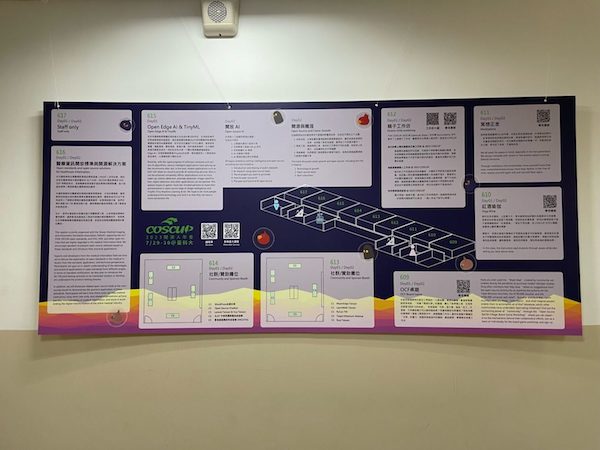 yoga, meditation, board game and parents workshop Becoming better contributors to social impact
yoga, meditation, board game and parents workshop Becoming better contributors to social impactFrom a sustainability perspective, technologies devoid of usability contribute to the generation of excessive waste. Although digital, the hidden mound of discarded components remains invisible. If we could visualize it, the space consumed by discarded hardware, the energy expended by servers, electrical consumption, data usage, and more would likely span vast expanses. Surprisingly, cloud storage – in existence for over a decade – has become more polluting than the aviation industry. Amidst the digital revolution’s accelerated production of software and the cost-effective proliferation of hardware and software, minimal thought has been spared for the unsustainability of this excessive production. Moreover, the repercussions of this surplus on the physical world remain woefully unaddressed.
From both a software and product perspective, technology devoid of usability and tangible user value fails to find traction within communities or markets. The pursuit of acceleration often overlooks a pivotal question: Why and for whom are we creating this technology? While development timelines might differ from research periods, harmony between these phases ensures the birth of superior and more sustainable creations.
In essence, the COSCUP conference didn’t just highlight open design’s significance, it underscored the imperative need to integrate user-centric perspectives into Open Source innovation. This paradigm shift extends beyond code, advocating for a holistic approach that recognizes the interplay of technology, design and its real-world implications.
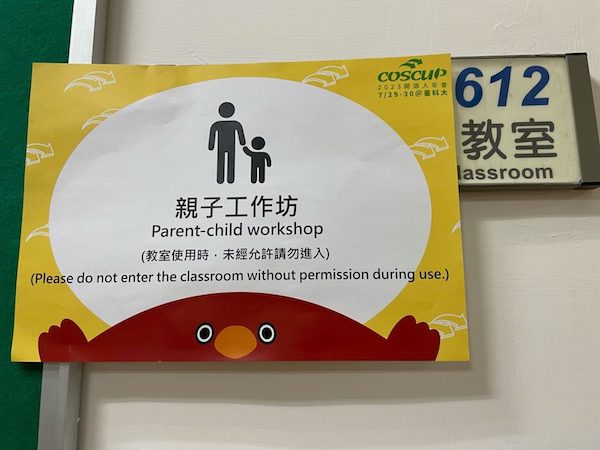 Door signage for the parent-child workshop. Credit Paloma Oliveira.
Door signage for the parent-child workshop. Credit Paloma Oliveira.Prioritizing well-being: nurturing mental health and balance
For a while now, both Europe and America have been awash with articles and talks addressing mental health issues, burnout and the impostor syndrome. A growing chorus stresses the urgency of spotlighting these challenges, emphasizing individual care and self-preservation.
Conferences can often become grueling endeavors. The short timeframes that cram copious amounts of information, combined with the jet lag and the effort of navigating languages that aren’t always native, transform conference participation into a marathon. While undeniably exciting, it’s essential to recognize that conferences also constitute a form of work, especially in the context of Open Source, which largely resides within the professional sphere.
Seldom do conferences provide havens for respite, such as quiet rooms (which are rare), but other great conferences like PyCon PyData Berlin and KubeCon do offer the space. This initiative marked a commendable effort towards acknowledging the attendees’ well-being. However, COSCUP took this commitment a step further. By constraining conference hours from 8:50 AM to 5:00 PM, the organizers ensured that attendees’ time, mirroring regular working hours, remained within manageable limits. This pragmatic approach mitigated the risk of exhaustion, a common side effect of conferences.
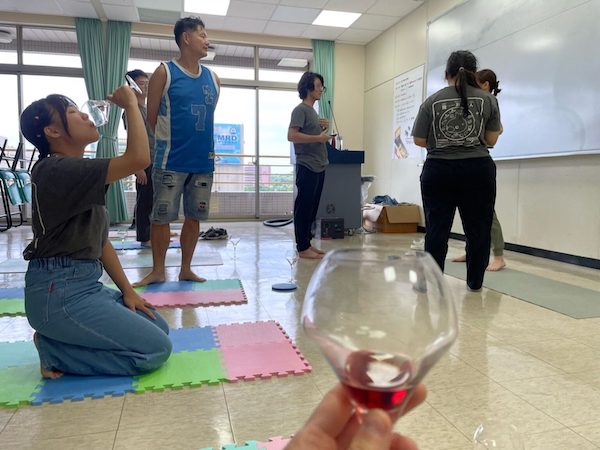 Image from the author attending Wine Yoga session
Image from the author attending Wine Yoga sessionIn addition, conversations with Zoei, who boasts a background in psychology and is a key contributor to the well-being initiatives at COSCUP, provided valuable insights. She emphasized the transition from rhetoric to action. This commitment was tangibly manifested in the Healing Market, offering a range of amenities – from massage room to meditation sessions and even wine yoga – all designed to offer attendees much-needed moments of solace during the conference days.
Notably, COSCUP extended its support to attendees who are parents, a demographic often left underserved in such environments. By dedicating specialized rooms, sessions and workshops to parents and children, COSCUP fostered an environment where developers and enthusiasts with children could participate fully without compromising on their family responsibilities.
In conclusion, COSCUP’s stance on well-being transcended the theoretical to embrace the practical, acknowledging the multifaceted nature of conference participation. The meticulous considerations for attendees’ mental and physical well-being reflect the conference’s commitment to holistic care, setting an example for other events to prioritize the welfare of their participants.
Beyond the conference halls: embracing cultural diversity
COSCUP invited participants to explore the rich tapestry of its host city beyond the conference walls. As a first-time traveler to Asia, I embarked on this journey with a mix of anticipation and trepidation. The value of in-person conferences became evident as I immersed myself in different cultures. Tangible experiences – from unfamiliar scents to novel flavors – offer a depth of engagement that virtual interactions can’t replicate.
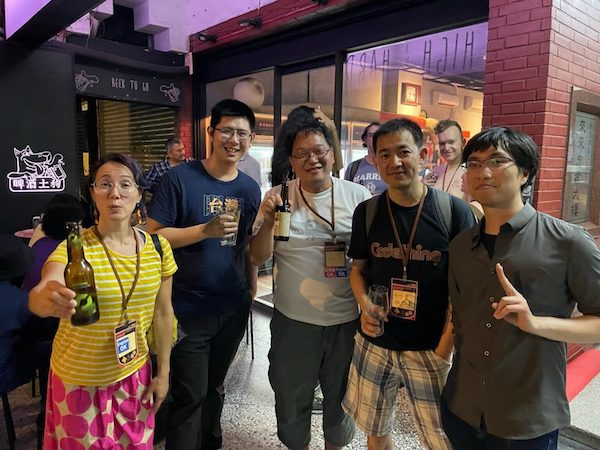 Image from the author with other attendants from all around Asia during the international gathering nightCOSCUP’s encouragement to step beyond the digital realm aligns perfectly with the yearning for immersive experiences. International Exchanges Cross Community Gathering, Taipei City Tour, and several other community lead gatherings offered opportunities for meetings outside the conference walls, allowing participants to strengthen their interpersonal relationships.
Image from the author with other attendants from all around Asia during the international gathering nightCOSCUP’s encouragement to step beyond the digital realm aligns perfectly with the yearning for immersive experiences. International Exchanges Cross Community Gathering, Taipei City Tour, and several other community lead gatherings offered opportunities for meetings outside the conference walls, allowing participants to strengthen their interpersonal relationships.
Why attend conferences?
While digital interactions possess the potential for depth, the allure of in-person conferences holds a distinct magic. This allure magnifies when we immerse ourselves in diverse cultures. Even when we share common themes, the prism of reception and cultural context transforms how we comprehend and receive information. Sensory dimensions such as scents, tastes, textures and even ambient temperature intricately shape our attention and interpretation. The symphony of these sensations underpins why we travel; it’s an experience beyond the distraction-prone realm of simultaneous online engagement.
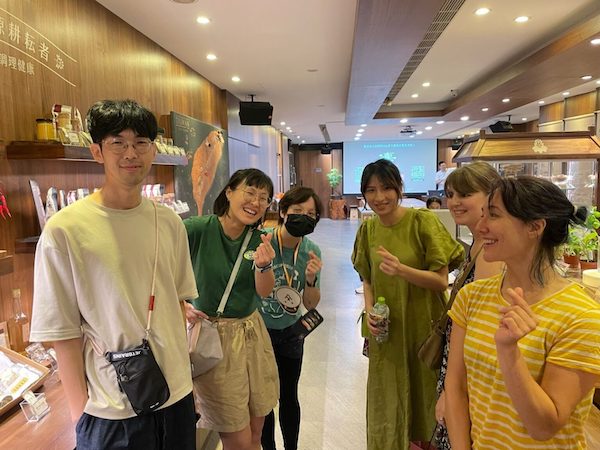 Image from the author with COSCUP organizers at the end of the Taipei City Tour, which included a walk-in tour through the Old Town and a Chinese medicine experience in the Daily Health storeI seized the chance to integrate myself into the country’s fabric and cross the east coast of the island by bike. I gathered some useful information about it which you can read here.
Image from the author with COSCUP organizers at the end of the Taipei City Tour, which included a walk-in tour through the Old Town and a Chinese medicine experience in the Daily Health storeI seized the chance to integrate myself into the country’s fabric and cross the east coast of the island by bike. I gathered some useful information about it which you can read here.
The essence of conferences truly thrives in the hushed conversations, spontaneous exchanges, and the symphony of interaction beyond the spotlight. Sensory immersion plays a pivotal role—varied sights, sounds, scents and tastes provide a holistic understanding of the conference’s backdrop and its cultural nuances. These elements, often absent in virtual participation, infuse layers of depth into the learning process. The impact of international conference travel transcends the confines of the conference hall, offering a multifaceted experience that enriches both professional and personal growth. It serves as a catalyst for forging meaningful connections, fostering a broader comprehension of global perspectives, and embracing the transformative potency of diverse cultural viewpoints.
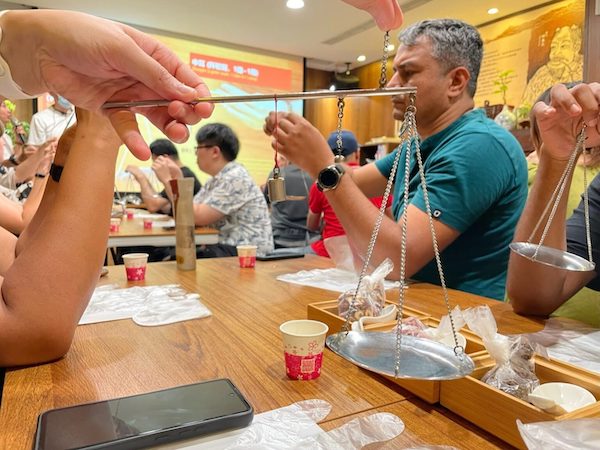
Conclusion
Beyond the conference sessions, COSCUP’s true essence lies in the connections forged, dialogues exchanged, and camaraderie nurtured within its corridors. It’s a collective journey that fuels personal evolution and transformation. The intricate tapestry of community engagement, well-being initiatives, and cultural immersion makes COSCUP an event that leaves an indelible mark.
As we contemplate the multifaceted nature of COSCUP, let’s acknowledge its distinctive blend of global perspectives, user-centric design and well-being advocacy. COSCUP transcends being just a tech event; it’s a platform that fosters connections, celebrates diversity, and sparks meaningful conversations that cross geographical boundaries. This is the true spirit of COSCUP – a narrative woven with threads of innovation, inclusivity and cross-cultural understanding.
This article was published in the Open Source Initiative (OSI) blog, Voices of Open Source. It is republished by Open Health News under the terms of the Creative Commons Attribution-ShareAlike 4.0 International License (CC BY-SA 4.0). The original copy of the article can be found here.